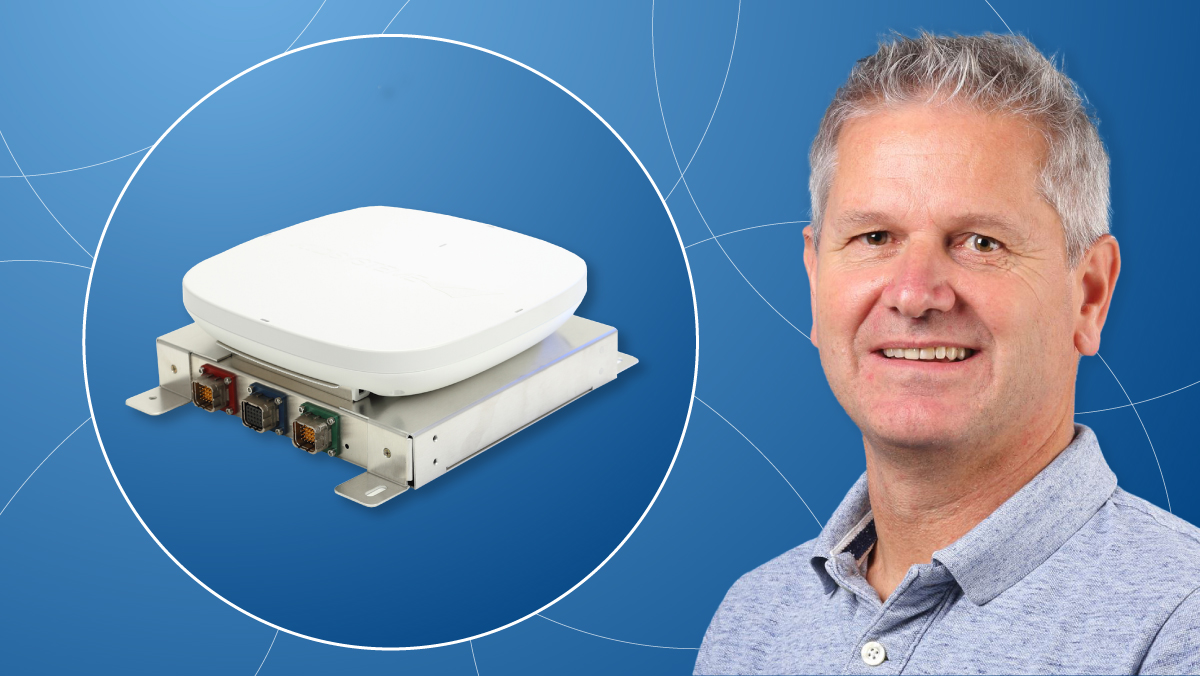This is a post by Christine Johansen
On your last flight, did you pass the time surfing or streaming? Time on a plane tends to mean time on our devices. Great inflight Wi-Fi is as important as delicious food and a friendly crew, and Martin Schirrmacher plays a key role in making sure you have it. As a cabin wireless systems hardware architect for Airbus, he helps keep your devices connected at 30,000 feet.
KID-Systeme, Airbus and Cisco have been working together for nearly two decades, outfitting hundreds of planes with Wi-Fi in that time.
The Cisco Newsroom recently spoke with Martin about the unique challenges he faces in his role and how Cisco technology helps him keep us all securely connected when we fly.
Tell us about the collaboration between Airbus, KID-Systeme and Cisco.
KID-Systeme (KID) is a 100% subsidiary of Airbus. It provides a wide range of smart digital solutions for the modern digital aircraft cabin, such as in-seat power, USB power, Wi-Fi, and video surveillance.
As part of KID’s strategy, Cisco's Wi-Fi access points (e.g. C9120ax, CW9166i) are used to secure on-board connectivity and successfully sell the connected cabin experience to aircraft customers. In other words, these products are provided to various airlines around the world to deliver high performance in-flight connectivity.
To meet specific aircraft requirements, the access points are optimally adapted and tested in KID’s production facilities and aircraft environments to become a certified product for installation in the aircraft cabin. Airbus is supporting KID by conducting the Wi-Fi performance testing in the cabin environment.
We all know how important good inflight Wi-Fi is. Is it hard to achieve and if so, why?
Yes! There are many challenges.
Density is a big one. Every square meter of the aircraft cabin holds 1.5 passengers and three connected devices. This is the highest density you’ll likely ever encounter—not even Cisco Live has that type of density! This requires quite a lot of throughput, and with three or four access points very close together in the airplane it creates unique management challenges involving radio resources, intrusion, protection, security, domain segmentation, and user group differentiation.
The access point must be quite small. It has to operate within the cabin temperature and vibration range, which is a lot larger than the range in a home or even in an industrial setting. Plus, it has to live with a limited power dissipation budget—we can't blow out the heat because it is installed behind the cabin ceiling where there's no air circulation. It also must be very easy to use because the cabin crew are not Wi-Fi or IT experts.
The wireless access point must have innovative technology, since passengers bring onboard the latest devices—they are typically no older than three years. Legacy equipment can't handle these new devices, and yet airplanes are long-lasting and there are long lead times; buy an aircraft today and it will be delivered in five or six years.
Another big challenge is that the airlines are very price sensitive, so we need to find a good compromise between functionality and cost.
Last but not least this radio device must be globally certified. This is extremely complex. Airplanes cross lots of borders, and every nation and local telecom authority requires that their rules be followed when that aircraft lands and opens its doors. Some countries accept FCC or EU test results, but others request local retesting. Getting certifications from all those entities requires a lot of effort.
What does Airbus/KID consider when selecting a Wi-Fi solution provider?
We are looking for a supplier that delivers all the features and functionality we need but is also mature, robust, and field proven.
But it's not only the hardware that we consider; the other side of the medal is the management solution. We need a powerful and flexible Wi-Fi controller solution that gives us many parameters to optimize the uniquely dense cabin environment. Very few suppliers of equipment offer as large an amount of functionality.
How do you test performance before the Wi-Fi gear gets into a plane?
We have two plane mock-ups where we conduct Wi-Fi performance testing. One is an A321 and the other is an A380 – basically half of the plane with the lining and the seating and a bit of the metal “skin”.
We test different scenarios. What happens when passengers board? Do all of their devices lock onto the first access point they “see”? Or does the controller push clients to the best possible access point? What happens when someone moves about the cabin? We share the results with Cisco and discuss how the wireless manager could be optimized for user group segmentation, audio/video throughput and quality of service.
What types of issues do you identify and work together with Cisco to fix after these tests?
In the last test campaign, we focused a lot on load balancing. We worked on how to distribute 180 devices to the access points evenly and allow for some movement throughout the cabin without degrading performance. Based on this Cisco honed the traffic load controller.
Why is a close relationship with Cisco so important?
A close partnership between Cisco, KID and Airbus is the basis for our success in delivering high performance Wi-Fi access points to the market. Trust, regular communication, and excellent support are key components in a good relationship.
How will the new Cisco access point help you better serve customers, and when will it be in planes?
The new access point can serve about 100 streaming clients while the last generation served 60 - that’s a big step ahead. At the same time, the throughput has more than doubled, which is important since we expect within three years up to 90 percent of passenger devices will be Wi-Fi 6 or 6E, which require higher throughput.
The airlines want a solution to stream HD content to 200 passengers. To meet those demands, we need the latest technologies—like multi-user MIMO and OFDMA—that are behind the Cisco product.
We will ramp up the production of the third-generation access point in Q2 of this year and the first aircraft with it will ship in Q3 or Q4 2023.
Troubleshooting at 30,000 feet is a challenge. Do you have any thoughts on how that might be handled in the future?
Today, when there is a problem a crew member reboots the device. If that doesn’t solve the issue, we need to send an expert on the next flight to troubleshoot. That costs a lot of money and time. In the future, remote monitoring and control from an IT expert on the ground will solve many problems. Plus, the airline will get valuable data in real time: what movies are people watching? What food do they enjoy? What duty free items are selling fastest? You could even provide the duty-free item at the gate upon arrival, instead of shipping it.
An optimized cabin Wi-Fi system leads to a better user experience, lower operating costs (lower number of WAPs per aircraft) and thus brings higher customer satisfaction. This goal can only be achieved on the basis of a reliable partnership.
Thanks for the interview, Martin!



